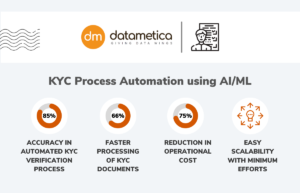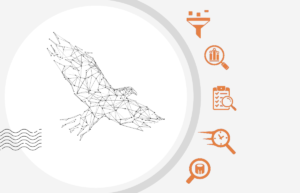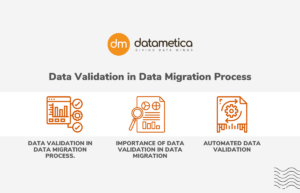Data has been at the center of the tech evolution. Over the years, various innovations have taken place to support data provisioning. Modern technologies like AI, ML, and NLP can be effective only when they have clean data structures as their foundation. Data Warehousing efforts were introduced as a necessary component for Business Intelligence requirements. The goal was to ensure rapid access to data sets, deriving insights from them and ensure a competitive edge for the business. The ever-increasing influx of data forced organizations to scale their data warehousing efforts or be left behind. While conventional Data Warehouses lack elasticity, agility, and pay-as-you-use efficiency made available by Cloud Platforms, replacing an on-premise Enterprise Data Warehouse (EDW) is not as easy as it might seem.
The journey of Cloud Migration looks easy with multiple cloud vendors providing out-of-the-box features and click and provision infrastructure. The data platform is continuously evolving into more sophisticated and advanced solutions like a data warehouse on the cloud, a data lake, a lakehouse, and a data mesh.
The Enterprise Data Platform journey has taken place in stages and has found new solutions for the hurdles that have come up with the constant evolution of data. Let’s take a closer look at the different Data Platform options available today:

Data Warehouse
A conventional data warehouse allows data integration from various heterogeneous sources and categorizes and stores them for future consumption. It is top-down, driven by use cases and business layers rather than all available data from a bottom-up perspective of data utilization. It works on prebuilt operational schemas relevant to business demands, usually built on the ETL (Extract-Transform-Load) method.
Some challenges commonly associated with Data Warehouses are:
- Lack of capability to analyze transactional data,
- Lack of fault-tolerant and scalable distributed storage and compute
- For each new business requirement, the platform team has to identify related sources and relevant data to create the schema and deploy the ETL process.
- Updates to the existing schema can add to the time needed as schema change activity is complex
- The desired vision for a unified data repository never came to fruition, leaving enterprises to struggle with data silos; thus impeding effective and rapid decision-making within organizations.
The need to tackle these challenges led to the development of a new storage option – the Data Lake.
Data Lakes
Data Lakes helped enterprises solve most of the issues mentioned above via a schema-less architecture that facilitated storing all types of data for general data processing in a centralized place. They were built with multiple zones, starting from the temporal data store for receive data lake allowed data to be used across multiple use cases and could solve broader business problems spanning more functions, departments, and workflows.ng incoming data, raw data zone for storing original data, product zones for cleansing and data processing, sensitive zones for sensitive data, and sandbox zones for the data engineer and scientists to work on. All of these zones were controlled through role-based access management.
Despite the benefits, Data lakes have their own set of challenges:
- It was not possible to update records in place in the initial stages of its development
- Data security and access control were a cause of concern with data lakes.
- The unstructured data led to unusable and ungoverned data along with complex and disparate tools
- Data lake became a ‘data swamp’ due to the collection of all data in a centralized location without proper cataloging
- Being bottom-up and structure-less without a strong pre-defined schema, data lakes were more versatile. But ironically, businesses found it difficult to build use-cases due to the same lack of structure.
Suggested read: Data Lake vs. Data Warehouse
Data Lakehouse (Modern Data Warehouse)
A new design for a data platform that combined the data management strategy of data warehouses and the flexibility of data lakes led to the birth of the Data Lakehouse. These modern Data Warehouses are accessed via the cloud. They generally start out as data lakes with all data types; these are then converted to a Data Warehouseformat (an open-source storage layer that enables reliability in data lakes). These cloud-based data warehouse architectures are built for the high scalability required by today’s Data Analytics and Integration demands.
Databricks, the world’s first and only Lakehouse platform in the cloud, recently partnered with Datametica to help enterprises in their data modernization journey. The amalgamation of the best features of the data warehouse and data lake, in addition to being built on the new system design, ensures the provision of key capabilities like schema enforcement and governance, BI support, transaction support, support for diverse data types, and workloads, and end-to-end streaming among others.
Data Fabric
Data fabric is a relatively new concept that streamlines data access to ease self-service data consumption and provide integrated and enriched data. It is agnostic to data environments, utility, geography, and processes, and at the same time integrates end-to-end data-management features. While modern data platforms provide the much-desired scalability, data fabric helps democratize data access across the organization in a growing heterogeneous environment. Data fabric helps organizations better leverage the power of the hybrid cloud, modernize storage via data management and enhance the hybrid multi-cloud experience.
Conceptually, data fabric is a metadata-based method of connecting various data tools. It ensures that data is discoverable and self-descriptive, allowing business and IT to collaborate more effectively. It enables enterprises to enhance the value of data by providing the relevant data at the right time, regardless of its location.
Data Mesh
Data Mesh helps resolve issues in data lakes by dividing the data into business domains where specific users own relevant data as a data product. It ensures that every piece of information is addressable, self-describing, secure, discoverable, inter-operable, and trustworthy. Users access and query data easily at its location without having to transport it to a data warehouse or data lake resulting in faster responses to their queries, reports, and use-case delivery.
Data mesh co-exists with data lakes and data warehouses. Data warehousing is the overall process; data lakes behave like a vast information store, while data mesh allows faster access to analytics and insights.
Conclusion
When selecting data storage, organizations need to evaluate the various options carefully. The increased global importance of data-driven decisions highlights the importance of selecting the right option for organizational success. Data mesh – the hottest topic in data today, has found favour with enterprises as it makes data more accessible, discoverable, interoperable, and secure. It’s a distributed approach that provides data ownership and management to domain-specific business teams, thus clearing the data access bottlenecks of centralized data ownership.
Datametica is a prominent provider of enterprise data platform solutions and helps you identify the best solution for your organization. Reach out to our experts to learn more.
.
.
.
About Datametica
A Global Leader in Data Warehouse Modernization & Migration. We empower businesses by migrating their Data/Workload/ETL/Analytics to the Cloud by leveraging Automation.




One Comment